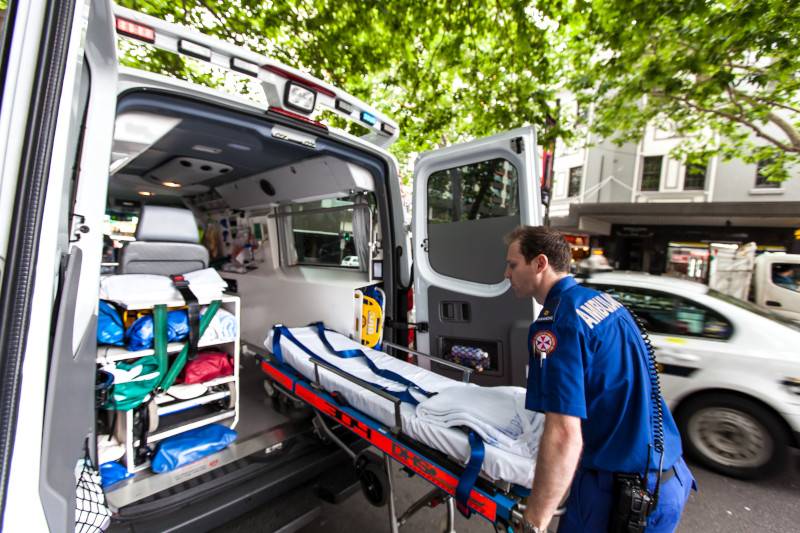From critical event management to mobile apps and AI, Motorola Solutions is adding more cogs to its emergency management software machine.
All of us deal with pressure in different ways, but technology has a way of improving how we approach and manage it. Until not so long ago, an operations manager at a power plant might have reached for a large binded folder to find answers to prevent a potential shutdown. Thumbing through evacuation plans, site schematics and other details, he or she would try to figure out how to keep workers safe, who to call and what to do next in a major emergency.

AI and software innovation can be used to alleviate pressure on paramedics and first responders in high pressure roles.
Today, software does much more of the heavy lifting.
When it acquired Australian software company Noggin earlier this year, Motorola Solutions added another string to its expanding command center software bow.
For Noggin, being acquired was a way to take its critical event and crisis management software to a broader, global audience via Motorola’s much larger emergency service and enterprise customer base.
Noggin provides a simple but intuitive, browser-based software workflow solution for different organizations and sectors. It helps its users to focus on the most important priorities and information in times of emergency. For example, which people and resources might be at risk, which ones can help to resolve an emergency and what the interdependencies are.
Noggin’s former CEO, now General Manager, James Boddam-Whetham, said Noggin carved out a niche for itself by focusing on how software could alleviate pain points for organizations during high pressure events. “No matter how good your crisis planning and preparation is, panic can still set in when the real thing strikes,” he said.
“We all know that major events and emergencies cause disruption and can put people under extreme levels of stress. So we thought, let’s develop a configurable crisis management software solution that they can customize to work for their own operations.
“When you centralize all of that critical information and make it easy to find when a big event hits, you alleviate the pressure on operators. It helps them to work through all the steps logically and ultimately, supports them in making better decisions,” James explained.
Not only an emergency management tool
He shared that many enterprises, such as the financial services sector, supermarket chains and government entities, have Noggin integrated within their planning, supply chain, and logistical operations.
“One of our transport customers in the United States has over 200 points of distribution and they need to know the status of their entire supply chain at all times – where goods are coming from, what our inventory levels are, and which personnel are on duty. Knowing all of this helps them to proactively plan for issues beyond their control, such as extreme weather, that could impact their operations.”

Motorola Solutions wants its command center products to reduce information overload for workers.
This orchestration capability is invaluable in sectors like logistics, where a single disruptive event can set off a chain reaction of events that customers need to anticipate and plan for. According to James staying ahead at all times not only mitigates disruptions, it can potentially save millions of dollars.
Taking command center operations to the field
Making contextual information centralized and actionable is something Motorola Solutions increasingly strives to add to its products. This is especially the case with its emergency call handling solutions which form part of its command center software portfolio.
In designing its newest software offering, VESTA NXT, Motorola Solutions focused on how to leverage AI to help call-takers sift through all the clutter in emergency calls from the public to find only the most relevant information. It’s an approach the company believes can drastically improve emergency response times.
No matter how good your crisis planning and preparation is, panic can still set in when the real thing strikes.
During a recent interview with Communications Day, Jeremiah Nelson, who leads the team responsible for developing the next generation of Motorola Solutions’ software solutions, said, “We’ve already got call takers that are stressed, and now you’re going to throw video, photos, text, all this opt-in information at them,” he said. “How do you do that in a way that doesn’t overwhelm people? Well, you use the AI in real-time to help them to prioritize.”
Jeremiah said transcribing and translating emergency calls is one of the key ways that Motorola Solutions applies AI. “This allows better situational awareness, so a caller can be speaking in their native tongue and understood by the operator. It’s not science fiction anymore, it’s happening now,”
With software and AI dominating so many other parts of our lives, the shift in thinking about emergency calls being made from landlines and public phone boxes is well overdue.
Whether sharing more insights between command center and first responders in the field, or getting AI to close the information gap with communities, the emergency management sector appears set for a shake up with Motorola Solutions’ next wave of innovations.




